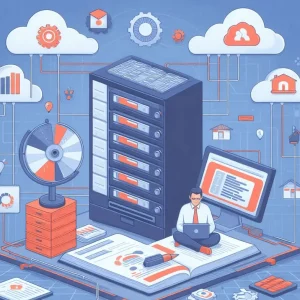If you pay attention to tech news, you may have noticed the recent buzzword, the “internet of things.” While this is a pretty silly moniker, it refers to a situation in which objects, people, or even animals are given unique identifiers, enabling them to transmit data over a network without any interaction with another human or a computer. Through the use of wireless technology and rugged servers, the Internet of Things (IoT) has evolved into a complex network with limitless possibilities.
1. The Internet of Things is All Inclusive
When you talk about the internet of things, there are almost no limits to what types of ‘things’ can be considered. A ‘thing’ can be a human with a wireless heart monitor, livestock with biochip transponders, or even an automobile that can alert its driver when the tire pressure is low. In short, a ‘thing’ can be anything that can be measured with a sensor, given a unique IP address, and transmitted via wire or wirelessly.
2. Machine-to-Machine Transmissions Most Common
Most of the internet of things at this point today is comprised of machines speaking with other machines. Often this is referred to as M2M for short. For instance, many machines used in the manufacturing, power production, and oil and gas utilities already transmit data between each other in order to provide time-sensitive information that is central to their operation. For instance a rugged server atop a weather station might record and wirelessly transmit data to a meteorological team on the ground.
3. Advancements in IP Address Technology
In order to access, or be accessed by, the Internet and its users one needs a unique IP address assigned to their computer or website. In the past, this was a simple numerical address. However, IP addresses have advanced so far that theoretically there could be a unique IP address assigned to every atom on the earth, and there would still be plenty of addresses left over for multiple more earths.
4. Traffic Increases Lead to Security Concerns
As a result of the advancements in both IP technology, and the increase in the number of data nodes that are actively capturing data and transmitting it to a server somewhere. As this traffic ramps up and more and more people start recording and transmitting data for their own personal reasons, issues like data privacy and security will become of critical importance as the IoT continues to evolve.
5. The IoT is Not New
Although the term ‘The Internet of Things’ was not coined until around the turn of the century, it has been in effective practice for several decades. In fact, the first Internet equipped appliance was a soda machine at Carnegie Melon University built in the early ’80s. Programmers were able to connect to the machine via a network to check the status of the machine and whether their favorite beverage was stocked in the machine before they made the trip over.






More Stories
Elevate Your Efficiency: Streamlining Processes with IBM IoT Technology
Maximize Efficiency: How Private Cellular Networks Transform Operations
How to Learn Android App Development and Innovate